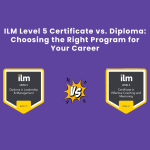A product launch is the planned process of bringing a product to market and making it available to the public. The marketing strategy is laid out in the marketing plan with the intention of convincing buyers to accept the new product.
Careful planning, typically months in advance, is necessary for successful product launches. Your target demographic, the scope of your launch, and the overall timeline must all be taken into account if you want to arouse curiosity.
We’re here to provide you with the most comprehensive planning manual so you can think through the specifics and organize the ideal product launch.
Who: Potential buyers of your product
Your brand-new product didn’t come about in a vacuum. Whether it was based on customer feedback, competitor analysis, or research, your team had some inkling that it would be a great market fit. It’s now up to you to figure out how to convey the benefits and unique selling points of your product. This may sound obvious, but product marketing frequently convinces a target market to sign up for a free trial or request a demo.
First, conduct customer research
Your product’s debut is the main objective of your roadmap, which is very clear. However, to get there, a variety of people must provide high-level input, with your consumers ranking high on that list.
Product launches won’t be complete without asking your customers for their feedback on the product features you have created thus far and what they wish you would do differently, even if this may seem like a labor-intensive chore.
Create your product messaging and positioning
The fun starts when you’ve gathered your background information. The creative aspect of being a product marketer is converting these statistics into product marketing that will appeal to your audience.
You should start by considering your product’s niche, how it stacks up against the competition, and the most effective strategy to market it to various target markets. Product positioning consists of the following elements:
Price:
How does your product stack up against the competition, and how would you characterize it in terms of luxury, value, or affordability?
Application of the Goods:
How certain features correspond to various use cases
Target market:
How your solution satisfies the numerous buyer personas from your study
Why your product is better than and distinctive from those of your rivals.
Additionally, you must consider how your product messaging will appear on your website, sales materials, emails, and social media platforms and be ready to write for each platform’s audience. Your product messaging must be acceptable for each of these platforms.
What: Your strategy for launching a product
Channel selection is important
You ought to have identified the distribution channels for your message throughout the planning stage. This is not a situation where “the more the merrier” applies, which is a mistake new product marketers frequently make.
Make sure to steer clear of any channels where the audience might not be appropriate. Use email, social, paid, and other channels to support one core channel, such as an event, a Product Hunt piece, or a blog post.
Soft launch
You might conduct a soft launch or launch to a small audience if your product isn’t yet ready for a full-scale launch. This allows you the chance to organize your team, test new product features, and gather feedback before launching a larger campaign.
You can gather user input during a soft launch to assist you in improving your product messaging. You can inquire about users’ favorite features and their motivations using an email survey or an in-app survey.
Launching features first
Each year, several releases of software programs will occur. More often released updates will include bug fixes or minor modifications to the product. In other situations, you must introduce a lot larger feature.
Even though it isn’t a stand-alone product, you may expect it will draw in a new clientele, offer a significant benefit to your current clients, or upsell to them.
Full-fledged launch
A full-scale launch involves pulling out all the stops, releasing your product to the public, and building up a lot of excitement. Most preparation and organization are needed for this launch. This style of launch is the most sensible when introducing a new product. Your staff must be ready for the potential surge of questions or sales the launch might bring in if you want to garner the maximum amount of attention from all channels. In addition, your goods must be immaculate.
When: The lead-up to the product debut
Planning your duties for a product launch is made simple by working backward from the anticipated date that product development will be finished.
You must give yourself adequate time for the following things:
1. Complete the product messaging
2. Include design components in your product messaging, such as those on your website, new sales deck, or sales collateral.
3. Write every piece of copy, including blog posts announcing new products, email campaigns, and social media posts.
4. Plan other resources, such as a press release, podcasts, or a webinar.
5. Confirm any paid advertising expenditures and the timing of any paid promotions.
6. All content should be ready in advance for publication on the designated day and time.
Your internal resources and strategy for a product launch will determine how much time is required for each process. A webinar and first advertisements might not be necessary for a soft launch.
Conclusion
Before releasing your product onto the market, you should align your marketing efforts with the help of a product launch plan.
A solid launch strategy will enable you to anticipate any obstacles you may experience while attempting to engage with potential clients and will open up doors for effectiveness; therefore, when planning your major product launch, be sure to develop a well-structured plan for your objectives.
Author Bio
I am Lakshita Khanna a Ba Hons journalism first-year student studying at Delhi university. Loves to grasp new information and research which keeps me going as a content writer. She has written for Thrv – Jobs to be done.















![Implementing Injury & Illness Prevention Programs (IIPPS) [INFOGRAPHIC] IMPLEMENTING INJURY](https://www.businesszillablog.com/wp-content/uploads/2022/07/woman-gb4d194bcc_640-150x150.jpg)



